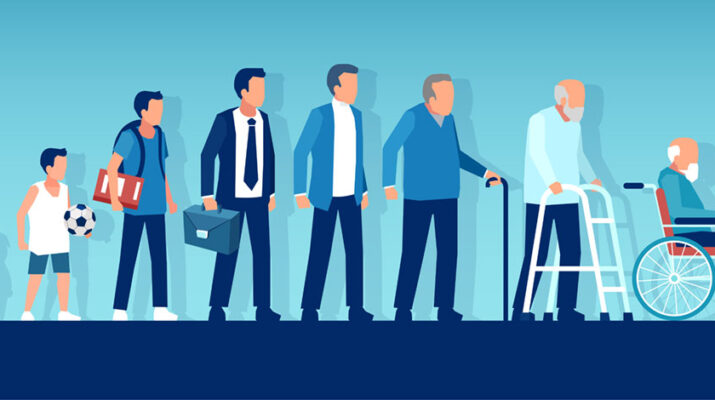Wealthy Outlive Poor by Nearly 10 Years
By Deborah Jeanne Sergeant
Researchers with University College London recently published a study that correlates wealth as the greatest factor that indicates when a person’s health will begin declining with age.
Wealthy people in the study of more than 25,000 adults over age 50 in England and the U.S. lived nine years longer in good health than poor people.
The study indicated that wealthy women were expected to live an average of 33 years without age-related disability compared with those with less money, who live only 23 to 24.6 years in good health.
Well-to-do men could anticipate 31 healthy years but poor men could expect 22 to 23 years.
One reason behind the gap is where a person lives.
A recent report by Finger Lakes Health Systems Agency (FLHSA) predict that children born today in Pittsford’s 14534 ZIP code will live up to nine years longer than those living in Rochester’s 14608 ZIP code.
“Where you live can significantly affect your health, your health behaviors and eventually your health outcomes,” said Albert Blankley, director of research and analytics for FLHSA in a news release. “People may be close geographically, but their health outcomes often are worlds apart.”
Neighborhood factors such as high smoking rates, a lack of access to healthy food and exercise opportunities, and unhealthy housing can significantly reduce life expectancies.
“This important report highlights many significant health issues and disparities,” said physician Michael Mendoza, Monroe County Commissioner of Public Health in a statement. “Together with our many local partners, we will continue to work to improve the health of all residents of Monroe County.”
Monroe County’s 2016-18 Health Profile states that adult smoking rates in the city of Rochester (21.8%) is much higher than Monroe County (14.5%) and Upstate (17.3%).
Finger Lakes Health Systems Agency has tracked county data for decades, but this is the first year the agency has produced individual county profiles.
“The profiles are designed to be easy to read and understand, with maps, data graphs and icons that bring the information to life,” said Catie Kunecki, regional planner and analyst for FLHSA.
Kunecki noted that FLHSA will maintain updated county health data on its website and intends to publish updated versions of the report in the future.
‘Poverty drives health inequity’
Registered nurse Christy Richards has a master’s degree in public health and serves as the health educator for Ontario County Public Health. She said that before the pandemic, the county’s No. 1 health concern was poverty.
“Poverty drives health inequity,” Richards said. “With poverty, you don’t have equal access to things like adequate housing, healthy foods and health insurance. It drives to inequities that cut lives short more than any other factor.”
She said that in the Finger Lakes region, these inequities cost $1 billion annually, including lost income and preventable medical expenses.
“Health inequity has to do with years of potential life lost,” Richards said. “That means when we’re talking about it biostatistically, it’s people who have died but shouldn’t have died.
“It’s important to understand that poverty isn’t a race or an ethnicity; it’s a socioeconomic status,” she added.
In the Finger Lakes, chronic health conditions are more common in people of lower socioeconomic status — those making less than $20,000 per year — than in those making $70,000 per year.
Lower income makes people 154% more likely to have diabetes, 105% more likely to have teeth removed prematurely, 224% more likely to have a depressive disorder. People should have more access to a dentist so their dental health wouldn’t suffer.
“It makes sense when we think about chronic stress,” Richards said. “They’re wondering, ‘Where will my next meal come from? How will I pay rent?’”
Richards said that the living environment is a minor factor compared with health behaviors such as “tobacco and vaping use, exercise, alcohol abuse, inappropriate sexual activity, and sexually transmitted diseases. These are all modifiable.”
Access to healthcare also makes a big difference for preventing pre-term birth, chronic health problems and emergency room visits.
Protective factors include family and social support, community safety and education. Not everyone who has a low income is uneducated. For example, an artist or childcare provider may have a good education but doesn’t make a lot of money. However, their education helps them make better lifestyle choices about health.
“Knowledge can help them mitigate their stressors,” Richards said. “We’re all in this together so we need to work on this together.”
The Centers for Disease Control and Prevention states that adults who are 25 and lack a high school diploma can expect to die nine years earlier than college graduates. Approximately 65% of Monroe County residents attended some college, higher than the statewide rate of 59%.
Visit www.commongroundhealth.org/insights/library to view county profiles on all nine counties: Chemung, Livingston, Monroe, Ontario, Schuyler, Seneca, Steuben, Wayne and Yates.

